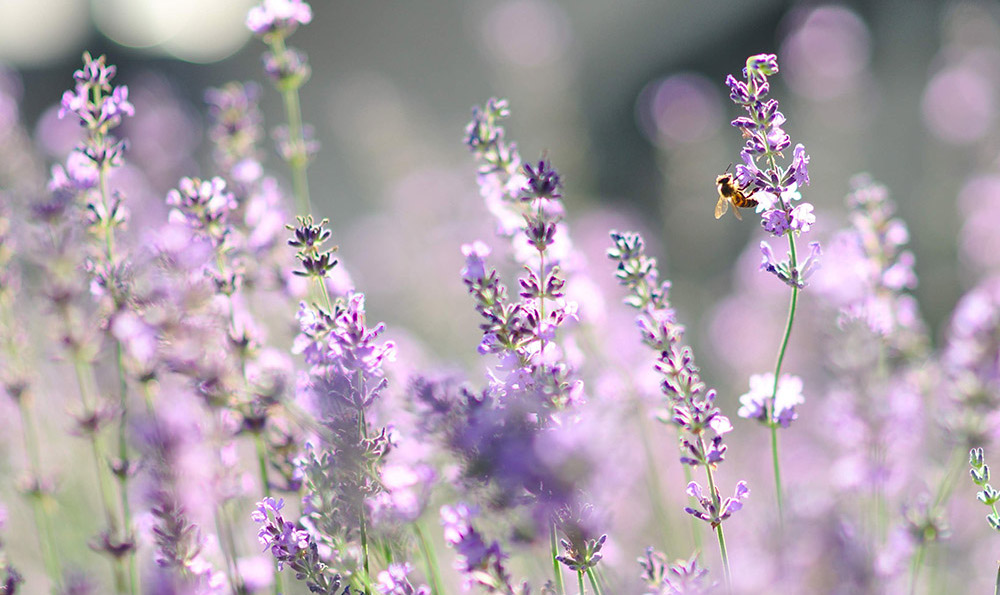
In France, three types of lavender are valued for their scent and aromatherapy benefits, making them popular choices in luxury candle manufacturing.
From ancient times through the 18th century, lavender has been recognized for its fragrance and medicinal properties. The plant is commonly referred to by its scientific names, "Lavandula stoechas" or Spica. During the Middle Ages, people used it for medicine, but the Romans were the first to turn it into a perfume for baths and cleaning. They named it lavender, which comes from the Latin word "lavare", meaning "to wash". This aromatic plant, known as a "precious plant" by Roman naturalists, became popular across the Mediterranean. It helped lead to the modern practice of creating custom scents.
AROMATIC LAVENDER
In France, there are three varieties of lavender whose essences are used for their aromatherapy and olfactory properties, making them highly sought after in custom candle production for luxury brands. Classic lavender, primarily cultivated in the Mediterranean basin, grows between 600 and 1500 m above sea level. Its production significantly increased with the growth of the perfume industry, especially in Grasse, which is known as the French perfume capital.
Its extremely aromatic and powerful notes are instantly recognizable, making it a staple in bespoke fragrance design agency projects. The scent profile, which is herbal, fresh, camphorated , and medicinal, is defined by the percentage of linalyl acetate, a floral compound with woody hints that guarantees its high quality in creating private label fragrances. However, since the mid-20th century, production has become less widespread, replaced by a hybrid variety combining Lavandula Vera and Lavandula Spica: lavandin. Of lesser quality yet more commonly used due to its higher essential oil output, lavandin is becoming increasingly popular in luxury scented candle private label manufacturing.
More camphorated than authentic lavender, lavandin offers a fresher, woodier, and spicier olfactory profile, although it lacks the refinement of real lavender. Fine lavender, conversely, is the crown jewel of Fine Perfumery, costing ten times more than classic lavender. It reveals a light, fruity delicacy containing linalool, eliminating the hay-like note perceived in other lavenders and ensuring its desirability in branded ambient fragrance. Lavender essential oils, like those of other natural plants such as rose or geranium, are extracted using steam distillation, enhancing their appeal in private label home fragrance lines.
Thirty years ago, 50 kg of lavender were grown per day per person; today, we collect 500 kg per day per person, reflecting the skyrocketing demand for high-end scented product manufacturing. Today, French farmers cultivate around 4,500 hectares of the plant, catering to the increasing consumer interest in luxury candle branding.

LAVENDER, MEDICINE AND AROMATHERAPY
Spike lavender is also highly prized for its medicinal properties and is often featured in bespoke home fragrance manufacturing. With anti-inflammatory, antiseptic, antibacterial, and healing properties for wounds and burns, it serves as an excellent insecticide for lice and an anti-venom for bites. Its essential oil is also recommended for relieving muscular pains, cramps, and headaches, and it effectively alleviates respiratory problems such as coughs when inhaled.
In aromatherapy, just a few drops of lavender oil with medicinal properties can relieve pain. It can be applied for soothing massages, particularly on the plexus, providing therapeutic effects in custom fragrance development.
Other aromatic plants like peppermint, rosemary, thyme, tea tree, eucalyptus, or camphor also possess surprisingly effective therapeutic abilities when used in conjunction with lavender. When mixed with other substances, these plant-based essential oils can be used to make a relaxing and comforting atmosphere with diffusers, scented candles, or home fragrance bottles.
And olfactory marketing plays a role here, as it communicates feelings and encourages people to enjoy the pleasant scent of lavender. This often results in new product ideas within branded ambient scents.

